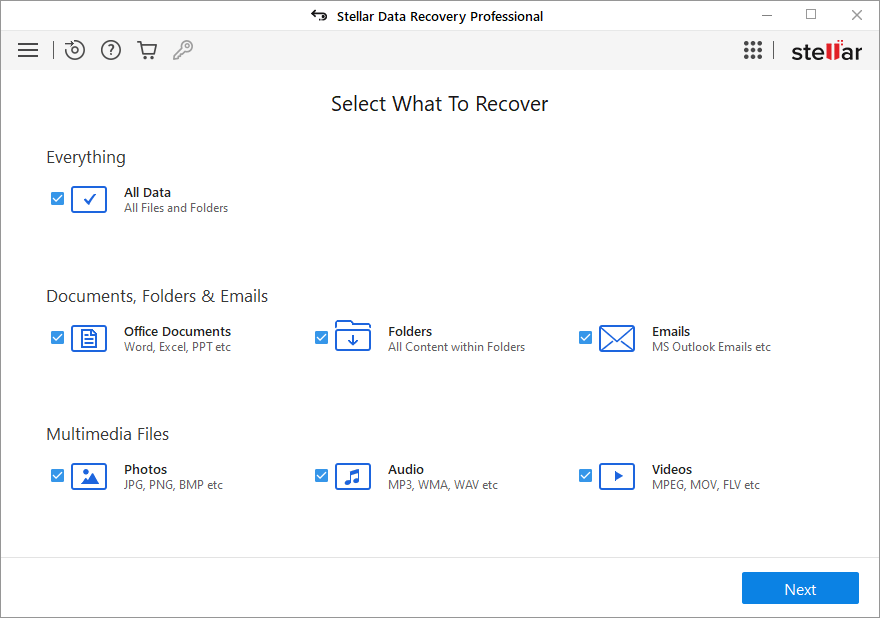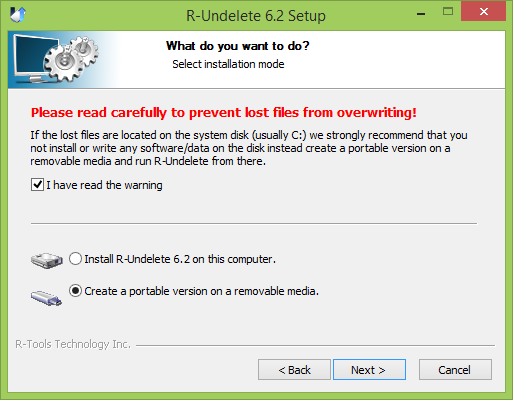What is CryptBIT 2.0 ransomware?
![CryptBIT 2.0 ransom note:
Hello!
Now your files are crypted with the strongest millitary algorithms RSA4096 and AES-256.
In addition, all encrypted files have been sent to our server
and in the event of non-payment within 7 days,they will be made public.
Warning!
Do not rename encrypted files.
Do not try to decrypt your data using third party software.
You can only do damage to your files, lose your money and time.
In order to confirm that we are not scammers, you can send 2-3 files to the email address below.
Files should be less than 5 MB and contain no valuable data (Databases, backups, large excel sheets, etc.).
Please don't forget to write the name of your company in the subject of your e-mail.
You will receive decrypted samples.
To recover all files you must contact us for a private quote by the contact email.
You have to pay for decryption in Bitcoins.
P.S. Remember, we are not scammers.
We don't need your data or information but after 7 days all files and keys will be deleted automatically.
Write to us immediately after infection
All your files will be restored. We guarantee.
Contact email:
cryptbit2.0@protonmail.com
BTC wallet:
[REDACTED]
Have a nice day
CryptBIT 2.0 ransomware group
This is the end of the note. Below is a guide explaining how to remove CryptBIT 2.0 ransomware.](https://www.computips.org/wp-content/uploads/2022/11/how-to-remove-cryptbit-2.0-ransomware.png)
As the name suggests, CryptBIT 2.0 is the second version of CryptBIT ransomware. The virus has changed somewhat since the first version, but the core behavior is obviously the same; it encrypts the files and demands payment in exchange for decrypting them. It renames the affected files, giving them .cryptbit file extension, the same as in the first version.
Since these two versions share the same encrypted file extension, the best way to distinguish between them is the ransom note. In this new version, it is called “CryptBIT2.0-restore-files.txt”. A copy of this note gets placed in every folder on the infected computer. You can read the full text of this note on the image above, should you need reference.
To summarize, the note doesn’t name a price; the victim is instructed to contact the hacker to get a quote. That is because CryptBIT 2.0 explicitly targets companies. The note also threatens those who choose not to comply with these demands, but the threats are inconsistent. The first threat mentions that the files will be made public, but the second says they will be deleted.
Whether to pay the hackers or not is each victim’s decision. That said, paying is risky; it is quite common for these criminals to not give the files back. For alternative ways to remove CryptBIT 2.0 ransomware and decrypt .cryptbit files, read the guide below.
How to Remove CryptBIT 2.0 Ransomware
If you have working backups of your encrypted files or you are not going to try and recover lost files, then scan your computer with one or several antivirus and anti-malware programs or reinstall the operating system altogether.
Alternative antiviruses:
Malwarebytes (Windows)
How to Recover Files Encrypted by CryptBIT 2.0 Ransomware
If you want to recover files encrypted by ransomware you can either try to decrypt them or use methods of file recovery.
Ways to decrypt the files:
- Contact the ransomware authors, pay the ransom and possibly get the decryptor from them. This is not reliable: they might not send you the decryptor at all, or it might be poorly done and fail to decrypt your files.
- Wait for security researchers to find some vulnerability in the ransomware that would allow you to decrypt files without paying. This turn of events is possible but not very probable: out of thousands of known ransomware variants only dozens were found to be decryptable for free. You can visit NoMoreRansom site from time to time to see if free decryptor for CryptBIT 2.0 exists.
- Use paid services for decryption.
Other ways to recover encrypted files:
- Restore from backup. If you make regular backups to a separate device and check from time to time that those are in working order and files can be successfully restored – well, you probably won’t have any problems getting back your files. Just scan your computer with a couple of AVs and anti-malware programs or reinstall the operating system, and then restore from backup.
- Recover some files from cloud storage (DropBox, Google Drive, OneDrive, etc.) if you have one connected. Even if encrypted files were already synced to the cloud, a lot of cloud services keep old versions of altered files for some time (usually 30 days).
- Recover Shadow Volume Copies of your files if those are available – ransomware usually tries to delete them too. Volume Shadow Copy Service (VSS) is a Windows technology that periodically creates snapshots of your files and allows you to roll back changes made on those files or recover deleted files. VSS is enabled together with System Restore: it’s turned on by default on Windows XP to Windows 8 and disabled by default on Windows 10.
- Use file recovery software. This probably won’t work for Solid State Drives (SSD – a newer, faster and more expensive type of data-storage devices) but is worth a try if you store your data on a Hard Disc Drive (HDD – an older type of storage device which generally has more capacity). When you delete a file from your computer – and I mean completely delete: use Shift + Del or empty the Recycle Bin – on an SSD, it gets wiped from the drive right away. On an HDD however, it rather gets marked as deleted, and the space it occupies on a hard drive – as available for writing, but the data is still there and is usually recoverable by special software. However, the more you use the computer, especially if you do something that writes new data on the hard drive, the more chance that your deleted file gets overwritten and will be gone for good. That is why, in this guide we will try to recover deleted files (as you remember, ransomware creates an encrypted copy of a file and deletes the original file) without installing anything on a disk. Just know that this still might not be enough to successfully recover your files – after all, when ransomware creates encrypted files it writes new information on a disk, possibly on top of files it just deleted. This actually depends on how much free space is there on your hard drive: the more free space, the less chance that new data will overwrite the old data.
- This might void your warranty.
- It’s harder to do with laptops, and you’ll need a special case (disk enclosure) to put a hard drive in before connecting it to another machine.
- It is possible to infect the other computer if you open a file from the infected drive before scanning the drive with AVs and removing all found malware; or if all AVs fail to find and delete the malware.
- Restart the computer.
- Once you see a boot screen tap F8 key continuously until a list of options appears.
- Using arrow keys, select Safe Mode with Networking.
- Press Enter.
- Hold down Windows key
 and hit X key.
and hit X key. - Select Shut down or sign out.
- Press Shift key and click on Restart.
- When asked to choose an option, click on Advanced options => Startup Settings.
- Click Restart in the bottom right corner.
- After Windows reboots and offers you a list of options, press F5 to select Enable Safe Mode with Networking.
- Launch Shadow Explorer.
- On the top left part of the window you can select a disk (C:\, D:\, etc.) and a date when a snapshot of files was taken.
- To recover a file or a folder right-click on it and select Export’.
- Choose where do you want to put the files.
Going further, we need to 1) stop ransomware from encrypting files that we recover, if malware is still active; 2) try not to overwrite files deleted by ransomware. The best way to do it is disconnect your hard drive and connect it to another computer. You will be able to browse all your folders, scan them with antivirus programs, use file recovery software or restore data from Shadow Volume Copies. Although it is better to download all tools you’ll need beforehand and disconnect the computer from the Internet before connecting the infected hard drive, just to be safe.
Disadvantages of this method:
Another, easier, way is to load into Safe Mode and do all file recovery measures from there. However, that will mean using the hard drive and potentially overwriting some data. In this case it’s preferable to use only portable versions of recovery software (the ones that don’t require installation), download them onto an external device, and save any recovered files onto an external device too (external hard drive, thumb drive, CD, DVD, etc.).
Boot Into Safe Mode:
 Windows XP,
Windows XP,  Windows Vista,
Windows Vista,  Windows 7:
Windows 7:
 Windows 8,
Windows 8,  Windows 8.1,
Windows 8.1,  Windows 10:
Windows 10:
Back up Your Encrypted Files
It is alwayse advisable to create a copy of the encrypted files and put it away. That might help you if free ransomware decryptor becomes available in the future, or if you decide to pay and get the decryptor but something goes wrong and files get irreparably damaged in the process of decryption.
Use File Recovery Tools to Recover Files
Screenshot:

About Stellar Data Recovery
R-Undelete

How to recover deleted files with R-Undelete
Recover Encrypted Files From Shadow Copies.
The easiest way to access Shadow Volume Copies is by using a free tool called Shadow Explorer. Just download the latest version and install it (or download the portable version).
How to Prevent A Ransomware Infection In the Future
Attachments in spam emails are one of the most common ways ransomware ends up on users’ computers. MailWasher filters spam and lets you preview emails on a server without downloading them onto your computer. MailWasher has customizable spam filters, uses bayesian filtering and works with all major email programs: Outlook, Outlook Express, Thunderbird, GMail, etc.
Remove CryptBIT 2.0 Ransomware
Now that you have your recovered the files or at least stored the still encrypted files on an external device, it is time to scan your computer with AV and anti-malware software or, better yet, reinstall the operating system, to fully remove CryptBIT 2.0 ransomware and get rid of any possible traces. Remember to also scan your external device before putting files back on your computer!